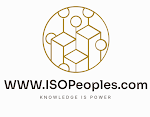Section 1: Introduction to ISO Certification
ISO Certification, often referred to simply as "ISO," is a globally recognized quality management system that organizations implement to ensure that their products and services meet predefined standards and consistently deliver quality. ISO Certification is not limited to any specific industry or sector; it can be applied across various fields, from manufacturing to healthcare and beyond. In this beginner's guide, we will delve into the world of ISO Certification, exploring what it is, why it matters, and how it can benefit your organization.
Section 2: Understanding ISO Standards
At the heart of ISO Certification are the ISO standards, which provide a framework for organizations to establish and maintain their quality management systems. ISO standards cover a wide range of areas, including quality, environmental management, information security, and more. These standards are developed and published by the International Organization for Standardization (ISO), a global body that brings together experts from around the world to create consensus-based standards.
Common ISO standards you may have heard of include ISO 9001 (Quality Management), ISO 14001 (Environmental Management), and ISO 27001 (Information Security Management). These standards are designed to help organizations meet specific objectives related to their industry or sector.
Section 3: The Benefits of ISO Certification
ISO Certification offers numerous advantages to organizations of all sizes and types. Here are some of the key benefits:
Improved Quality: ISO Certification ensures that your products or services consistently meet customer requirements and comply with industry standards.
Enhanced Efficiency: ISO standards promote streamlined processes and effective resource management, leading to increased operational efficiency.
Increased Customer Satisfaction: Meeting ISO standards often translates to higher customer satisfaction, which can lead to increased loyalty and repeat business.
Market Access: ISO Certification can open doors to new markets and business opportunities, as it is often a requirement for suppliers and partners.
Legal and Regulatory Compliance: Many ISO standards incorporate legal and regulatory requirements, helping organizations stay in compliance with relevant laws and regulations.
Section 4: The ISO Certification Process
Becoming ISO Certified involves a structured process. Here are the main steps:
Determine Applicability: Identify which ISO standard is relevant to your organization's goals and objectives. This choice depends on your industry, the nature of your products or services, and customer expectations.
Gap Analysis: Assess your current processes and practices against the requirements of the chosen ISO standard. This step helps you identify areas where improvements are needed.
Plan and Implement: Develop a plan to bridge the gaps identified in the gap analysis. This may involve process changes, documentation updates, and employee training.
Documentation: Create the necessary documentation to demonstrate compliance with the ISO standard. This often includes quality manuals, procedures, and records.
Internal Audit: Conduct internal audits to ensure that your organization is following the established processes and meeting the ISO standard's requirements.
Certification Body Assessment: Choose an accredited certification body to assess your organization's compliance with the ISO standard. The certification body will perform an on-site audit to evaluate your processes and documentation.
Certification: If your organization passes the certification body's assessment, you will receive ISO Certification. This certificate is valid for a specified period, typically three years, with regular surveillance audits to ensure ongoing compliance.
Section 5: Types of ISO Certification
ISO Certification is not limited to a single standard; there are numerous ISO standards, each tailored to specific objectives. Here are some of the most common types of ISO Certification:
ISO 9001: Quality Management: This standard focuses on enhancing customer satisfaction and consistently delivering high-quality products or services.
ISO 14001: Environmental Management: ISO 14001 helps organizations reduce their environmental impact, promote sustainability, and comply with environmental regulations.
ISO 27001: Information Security Management: This standard is all about protecting sensitive information, ensuring data confidentiality, integrity, and availability.
ISO 45001: Occupational Health and Safety: ISO 45001 assists organizations in creating safe and healthy workplaces, preventing accidents, and complying with relevant safety regulations.
ISO 22000: Food Safety Management: Particularly relevant for the food industry, ISO 22000 ensures the safety and quality of food products from farm to fork.
ISO 50001: Energy Management: ISO 50001 focuses on energy efficiency, helping organizations reduce energy consumption and lower their environmental footprint.
Section 6: Maintaining ISO Certification
Achieving ISO Certification is a significant milestone, but it's crucial to understand that it's not a one-time effort. To maintain your certification, organizations must continue to adhere to the ISO standard's requirements and undergo regular surveillance audits. Additionally, organizations should strive for continuous improvement in their processes and practices to ensure they remain competitive and deliver exceptional quality.
Conclusion
In conclusion, ISO Certification is a valuable tool for organizations looking to enhance their quality management systems, improve efficiency, and gain a competitive edge in the global market. By following the steps outlined in this guide and choosing the right ISO standard for your organization's needs, you can embark on a journey toward excellence in quality and performance.

